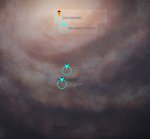This is a simulation of all the orbits of all the exoplanets we've discovered.
https://www.youtube.com/watch?v=gnZVvYm6KKM
I've had some beefs with the stellar forge in that I don't think it is entirely realistic and varied. It seems that the planetary systems I visit that have the known exoplanets added to them seem far more varied and interesting than the stellar forge generated systems.
Is there a fundamental flaw in the stellar forge now that we are starting to see a pattern of what the "norm" is out there in our galaxy? Maybe our solar system is much more different than most out there?
Don't get me wrong - some of the unique systems I've found are very cool. Some planets are very nice and there is a bit of variation for sure. Not as much as I thought there would be though.
Would you be offended or feel upset if they tweaked the stellar forge model to recreate a whole bunch of systems with the new model?
https://www.youtube.com/watch?v=gnZVvYm6KKM
I've had some beefs with the stellar forge in that I don't think it is entirely realistic and varied. It seems that the planetary systems I visit that have the known exoplanets added to them seem far more varied and interesting than the stellar forge generated systems.
Is there a fundamental flaw in the stellar forge now that we are starting to see a pattern of what the "norm" is out there in our galaxy? Maybe our solar system is much more different than most out there?
Don't get me wrong - some of the unique systems I've found are very cool. Some planets are very nice and there is a bit of variation for sure. Not as much as I thought there would be though.
Would you be offended or feel upset if they tweaked the stellar forge model to recreate a whole bunch of systems with the new model?









